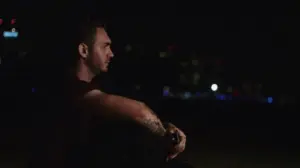You’ve heard the recent buzz about visual storytelling, and you’re always interested in getting ahead of the next big thing in marketing.
But, what is visual storytelling, exactly?
In a nutshell, it’s narrative-based content marketing that uses photographs, video, illustrations, and other images to inform consumers about a product, service, or company as a whole.
Video is arguably the most powerful medium for storytelling marketing.
In fact, about 60% of executives say they’d much rather watch a video about a product/service than reading text-based content about it. Plus, including a video on a landing page can increase your conversions by more than 80%.
The takeaway?
Storytelling video benefits both you and your consumers, in no small part because it creates an emotional response within your target market.
But why exactly is video storytelling so important, and how can you use storytelling in marketing to your advantage?
Read on to find out.

Storytelling and Your Noggin
What makes the video storytelling format so effective?
Well right off the bat, creativity, the ability to see past structures and institutions and dig deep into the playground of the mind.
While creating an immediate sense of empathy and recognition in the viewer is important and encourages them to keep on watching, what’s more important is the raw artistic vision behind your next production.
Yes, receiving practical information about a product, service, or brand is crucial. But hearing the technical side of things isn’t usually what “hooks” the consumer into wanting to learn more.
You need to tick into the melodies of the unconscious realms through creative nature and vision.
The greatest artists of all time have stunned the world with their abilities to relate to humanity as a whole through their unique endeavors.
“All too often, it is audacity and not talent that moves an artist to center stage.”
– Julia Cameron
The viewer should be able to see a part of themselves in the video storytelling campaign, relate to it emotionally, burst into laughter, tears, joy, or sorrow.
Storytelling allows you and your brand to be audaciously creative. It enables you to relate to your audience in a big way; after all, video content is the way of the future.
Let’s say you’re trying to sell a tea that promotes a better night’s sleep.
What would you be the most likely to respond to, a video ad that begins by talking about how a specific ingredient in the tea can help you to fall asleep faster?
Or, would you prefer a video that starts by showing a scene of a bride sleeping in past her wedding after relaxing to a smooth sip of chamomile?
Lights, camera, action, aesthetics, emotion.
We think we know the answer.
Remember, you can always include the more detailed/technical information later — that’s important, too. But the main focus should be the creative connection you make with the world.
There’s a scientific side to storytelling in advertising, as well.
In fact, studies show that listening to a story sparks activity in the auditory and visual cortices of the brain, its olfactory areas, and even the motor cortex.
Most importantly of all, these emotional responses promote a release of oxytocin, which makes consumers feel happier, more secure, and more likely to cooperate (AKA, more likely to buy your product.)
Tips for Effective Video Storytelling
Now that you know why creating an emotional connection with your consumers is so essential, let’s talk about some of the best ways to create effective and impactful video storytelling campaigns.

Address Consumer Emotions
To make an emotional connection with your viewers, you need to show that you understand precisely what they are going through — in short, empathize with them.
“The heart of creativity is an experience of the mystical union; the heart of the mystical union is an experience of creativity.”
-Julia Cameron
If you know your products, you know your market so make sure you understand how to connect with your audience — AKA how it will ease their path in life — and what problems your consumers would like to solve.
Then, tell a story that shows how your product or service can provide the solution they’ve been looking for, maybe even how it could help them laugh more.
For example, maybe you’re an AI company with a strong focus on call forwarding virtual receptionists.
TAKE ONE: The introduction of a robotic future has set the office aflame with dance, excitement, and the ability to do more of what they love.
Afterall when you do what you love, you are more productive. Trust us, we would know.
TAKE TWO: Your robots all the sudden have human emotion, they want to go on dates, dance with friends, cry all night, but they don’t have legs-hilarious.
An illusion to the worries you won’t have as an office investing in AI- the future is so bright.
Afterward, introduce your product, and then show how the ability to relax with friends, go on a date, or just leave the desk as the phone rings creates a more productive life for everyone.
Use Music
Get jazzy with it!
Don’t forget about the power of music when it comes to making emotional connections in storytelling marketing.
Fast music can create a sense of urgency, while sweeping strings evoke a sense of passion and romance.
Classic rock songs can make people feel free, while classical music often creates a fright!
Choose music that strengthens the kind of emotional connection you want to make.
Include Your Customers
Perhaps one of the best ways to make an emotional connection with your target market is to put them in the shoes of your image, brand, or product.
In addition to effectively promoting brand loyalty, (everyone loves getting a shout-out) this also shows new customers that you have helped “real people” get solutions to their problems.
You could follow the story of an individual customer and their journey with your brand. Or, you could create a video that features several of your customers talking about how what you offer has made a positive difference in their lives.
This is also an excellent way to communicate a sense of transparency and trust.
By hearing “success stories” from past customers — and not from your brand directly — consumers are much more likely to open themselves up to what the video is telling them.
Get Professional Help with Video Storytelling
Finally, remember that one of the most important parts of video storytelling is your overall production quality.
You don’t want to harm your brand’s reputation or fail to effectively deliver your message because of poor lighting, shoddy editing, problems with audio, or lack of creativity.
Working with storytelling marketing experts helps to provide you with the best possible production quality, but it can also do much more than that.
At C&I Studios, we can help you come up with storytelling marketing ideas that evoke powerful emotional responses in viewers while also reinforcing your branding strategy.
Our creative dreams and visions hit every part of the marketing process, from web design and social media to video marketing and photography.
Reach out to us, and unlock the creative potential behind your company today.